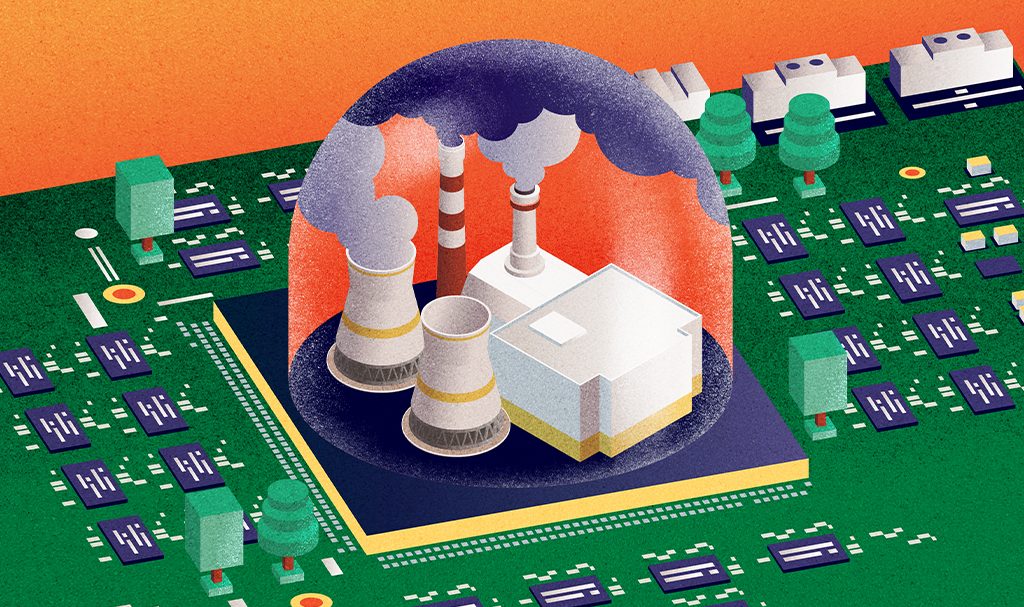Capping Carbon On Asia’s Supercomputers
By Tristan Manalac
When Pixar and Disney first shared a glimpse of their 2013 animated film Monsters University, fans quickly noticed one striking detail: the fur covering Sulley, one of
the movie’s two protagonists, was extremely realistic.
THOROUGH THOUGHT AND A POWERFUL HEART
A major solution for the steep energy costs of HPC systems is to maximize computing energy efficiency, explained Professor Satoshi Matsuoka, director of the RIKEN Center for Computational Science, in an interview with Supercomputing Asia. The goal, he said, should be to keep power consumption at the lowest possible level while also finding ways to achieve better performance.
RIKEN is home to the Fugaku supercomputer, developed by Japanese company Fujitsu. Since Fugaku debuted in 2020, it has consistently led the TOP500 list of the world’s fastest supercomputers. Though it was dethroned by Frontier in June 2022, Fugaku remains a solid contender for the world’s most powerful—and energy-efficient—supercomputer, particularly when looking at its real-use conditions.
According to Matsuoka, much of what underpins Fugaku’s power is thoughtful, purposeful design. “First, we had to design it efficiently,” he said, noting that because they knew that the supercomputer would be used for sustainability research, they specifically built its parts to achieve peak computing performance while doing away with other extraneous functions. “The machine was built with a mindset to save power.”
The heart of Fugaku—and largely responsible for its extreme energy efficiency—is the A64FX processor, which was also developed by Fujitsu.
A single A64FX chip contains 48 computing cores divided across four core memory groups (CMG). Each CMG can also contain up to one additional core each, which functions as an assistant. In processor parlance, a core is a small processing unit that can perform computing tasks independently of other cores. The vast majority of computer users will be well-served by machines that have two or four cores. A64FX dials up its performance by having 48.
Each core of the A64FX has a clock speed of 1.8 to 2.2 Ghz, which means that every single core can complete 1.8 billion to 2.2 billion cycles per second. Some simpler computing tasks can be completed within one cycle, while more complex instructions take multiple cycles. Though a bit simplistic, higher clock speeds typically translate to superior computing performance.
Matsuoka noted that aside from Fugaku’s processor, the network itself is highly efficient. Where commercial network cards use up 25 to 30 W per node, Fugaku’s ethernet over copper networks use 10 to 20 W per node.
The design for Fugaku also includes precise power control features for users. Whereas most processors operate by having all compute nodes on or off at the same time, Fugaku can be configured to run only the parts relevant to a certain task. “It contributes to significant savings in terms of power usage,” said Matsuoka.
These features, along with other engineering innovations, have allowed the Fugaku supercomputer to break performance and power-saving barriers. Compared with the K computer, an earlier Fujitsu supercomputer that was decommissioned in 2019, Matsuoka estimated that Fugaku is about 70 times more powerful in terms of real-use performance. “But power consumption only went up by maybe 20 to 30 percent,” he explained. “Thus, compared to its predecessor, the power efficiency of Fugaku is nearly a factor of 50.”
Preferred Networks also employed software optimizations that unlocked the full potential of MN-Core’s hardware and helped push MN-3’s energy efficiency numbers even higher.
In particular, the company came up with the MN-Core Compiler, a program that translates high- level computer code into another, more machine- friendly language. It was designed with two main goals: to minimize the need for user-side modifications and to maximize MN-Core’s features to achieve peak computing performance.
Specifically, the compiler had to figure out the optimal way of mapping out computations to each compute unit in the MN-Core’s hierarchical structure. Since the accelerator uses only a single instruction stream, the program also had to ensure a steady flow of data to push performance as close as possible to its theoretical max.
The end result is software that has strong control over hardware and can dictate how calculations will be carried out to achieve maximum efficiency. “InMN-Core, what’s conventionally decided and processed within the hardware automatically is exposed to the software side, and the software can manually control details of the computation in the hardware in a ‘manual mode’ to optimize energy consumption,” Doi explained.
This reflects Preferred Networks’ core philosophy: realizing hardware’s true promise through smart software design. “As long as they are properly controlled by the software, it can unleash silicon’s true potential,” Doi said.
POWER, POLICY & POLITICAL PRECEDENT
Despite the industry-transforming sustainability efforts of companies like Fujitsu and Preferred Networks, some crucial factors remain beyond the power of private entities.
For instance, in evaluating the carbon emission toll of a supercomputer, looking at how much energy it uses or how efficiently it can carry out calculations isn’t enough. It’s also important to factor in their country’s energy mix. HPC systems in countries powered mostly by renewable energy will be more sustainable than those in territories still reliant on fossil fuels, which is why Matsuoka shared that part of Fugaku’s mission is to help Japan develop its offshore wind and solar energy generation. But not every country is able to keep pace.
According to Singapore’s Energy Market Authority (EMA), some 95 percent of the country’s electricity comes from natural gas. This is the cleanest form of fossil fuel energy—but is nevertheless a carbon-intensive source. EMA estimates that Singapore will continue to rely on natural gas for the foreseeable future, but continues to search for and invest in more sustainable alternatives, like solar energy.
Aside from developing cleaner sources of energy, governments also have the power to shape their countries’ HPC ecosystems, coming up with policies that could help them meet consumer and industry demands while also keeping them in line with emission targets.
In Japan, for example, the government has announced substantial subsidies to help data centers.





